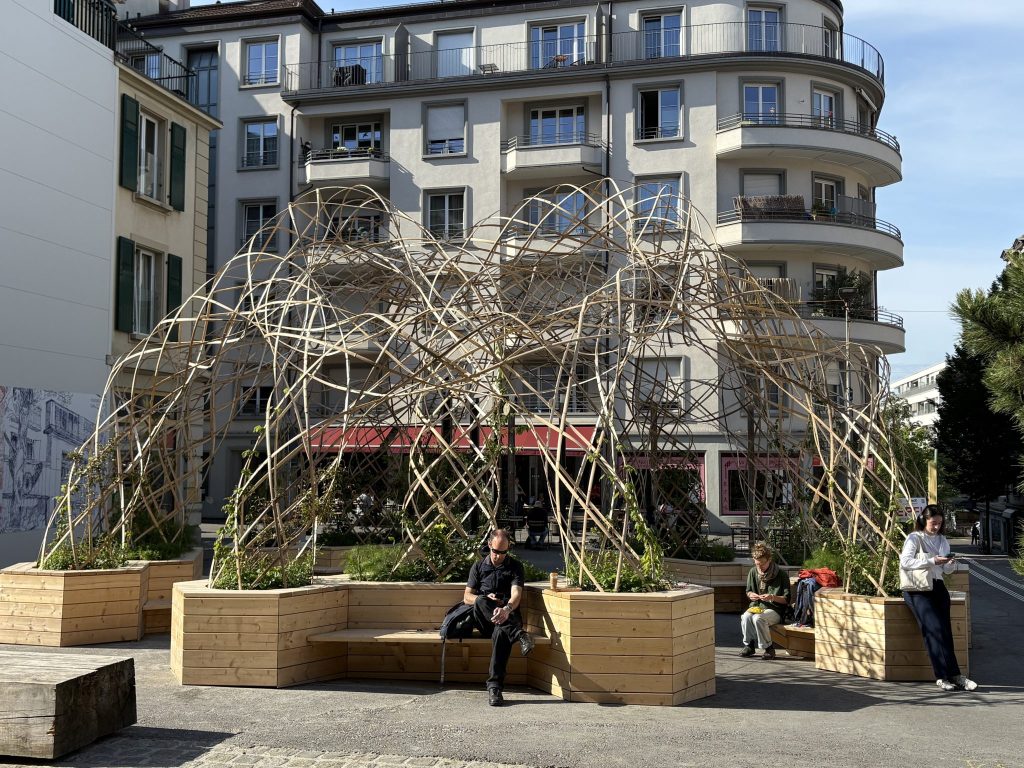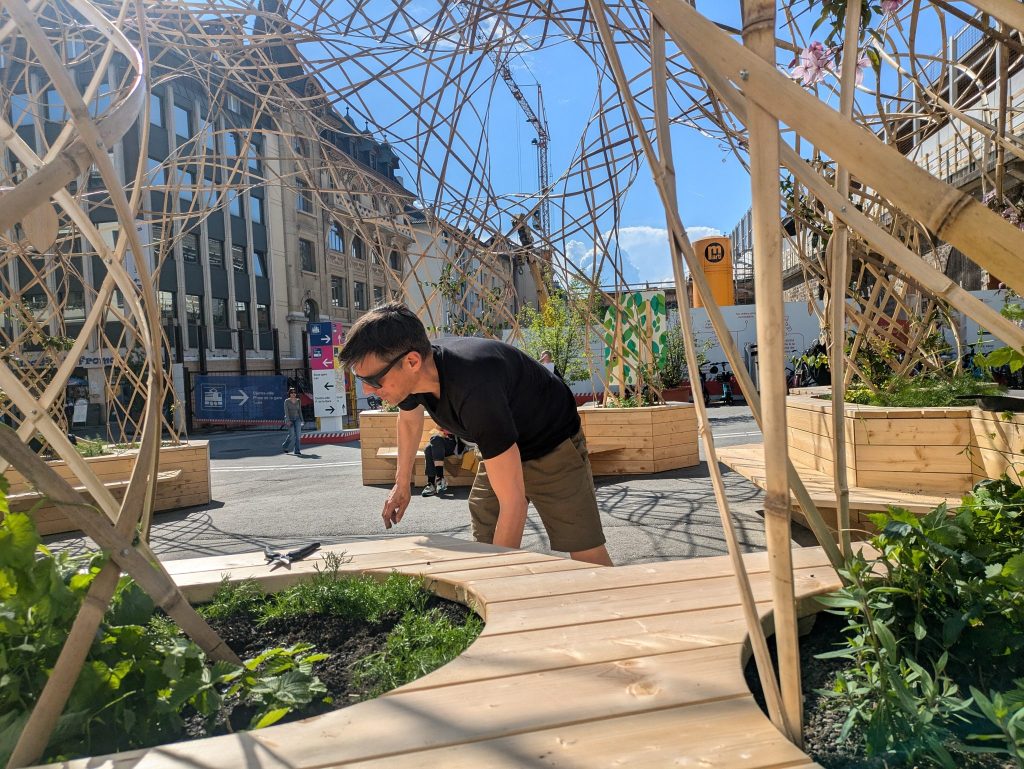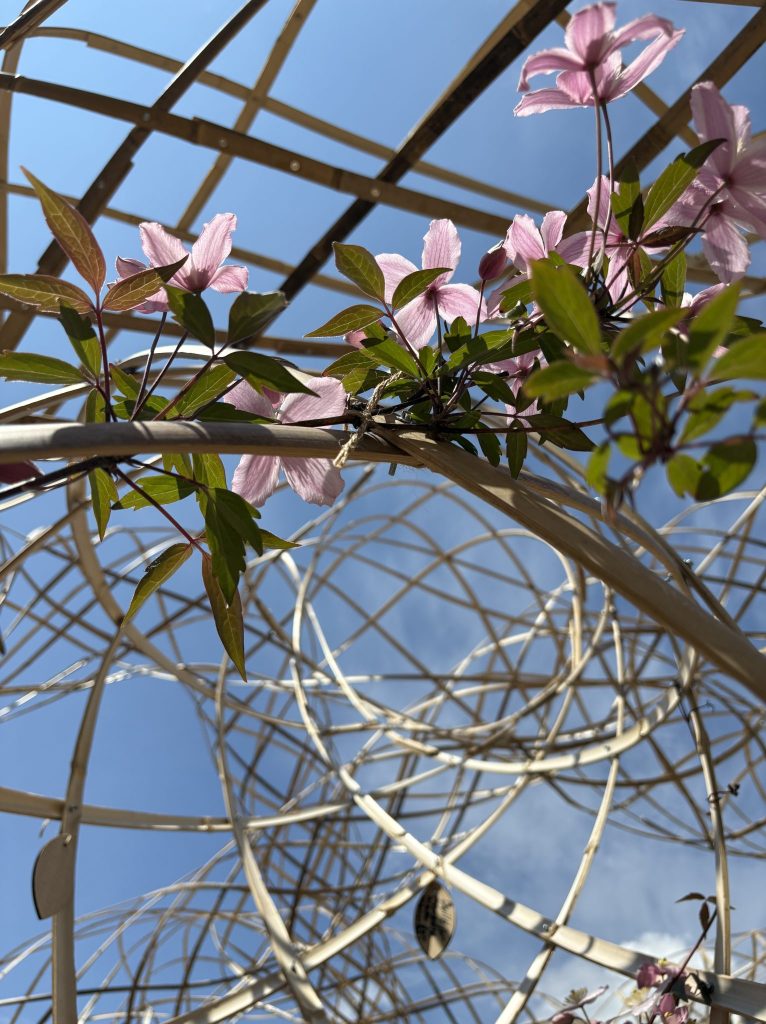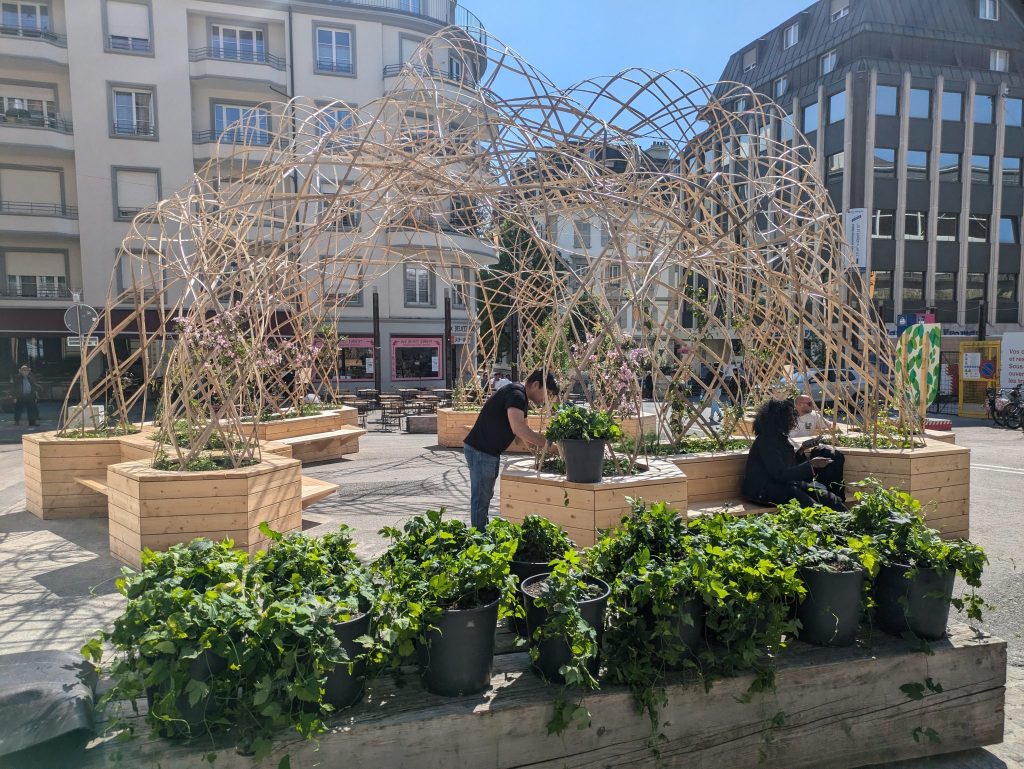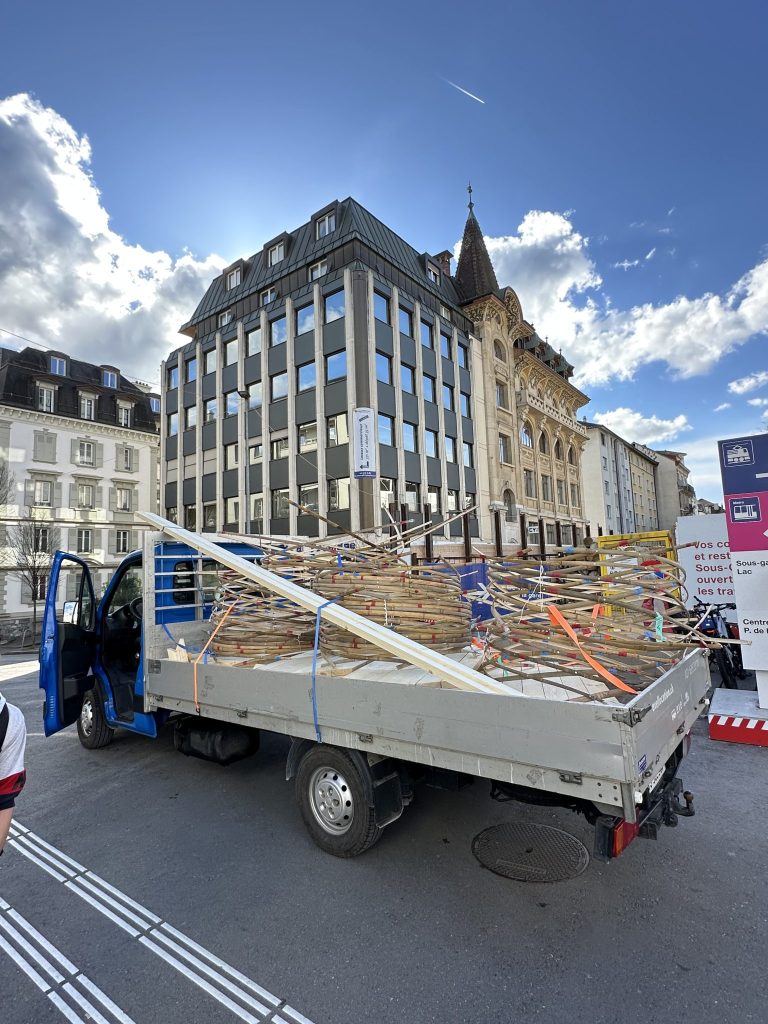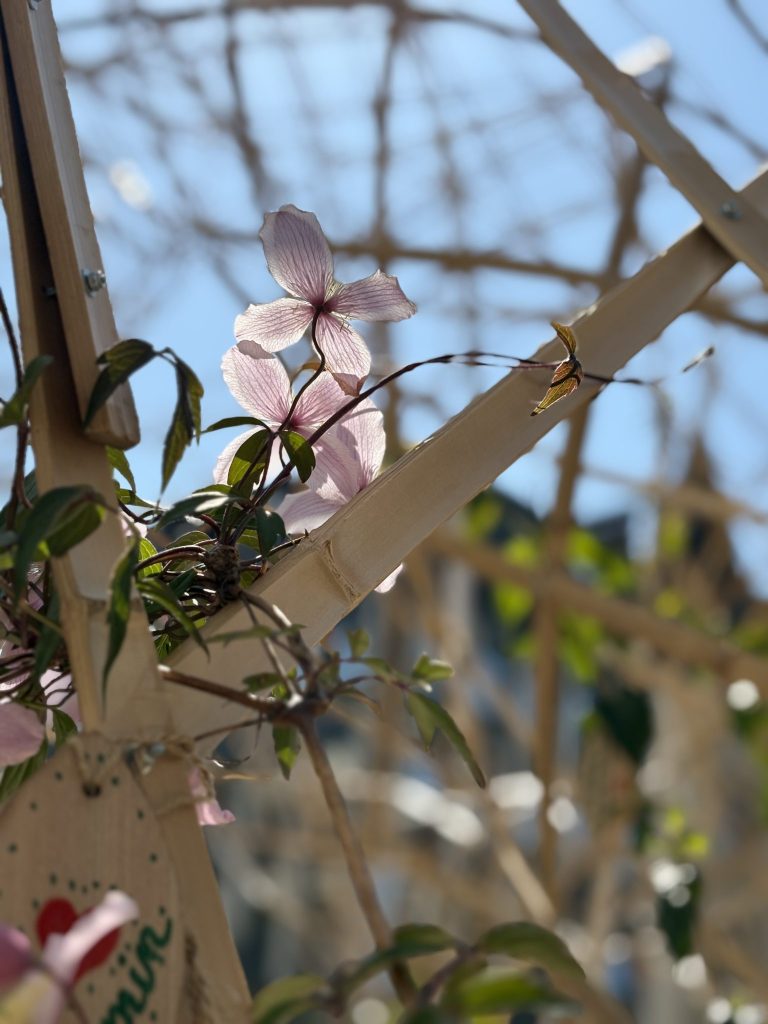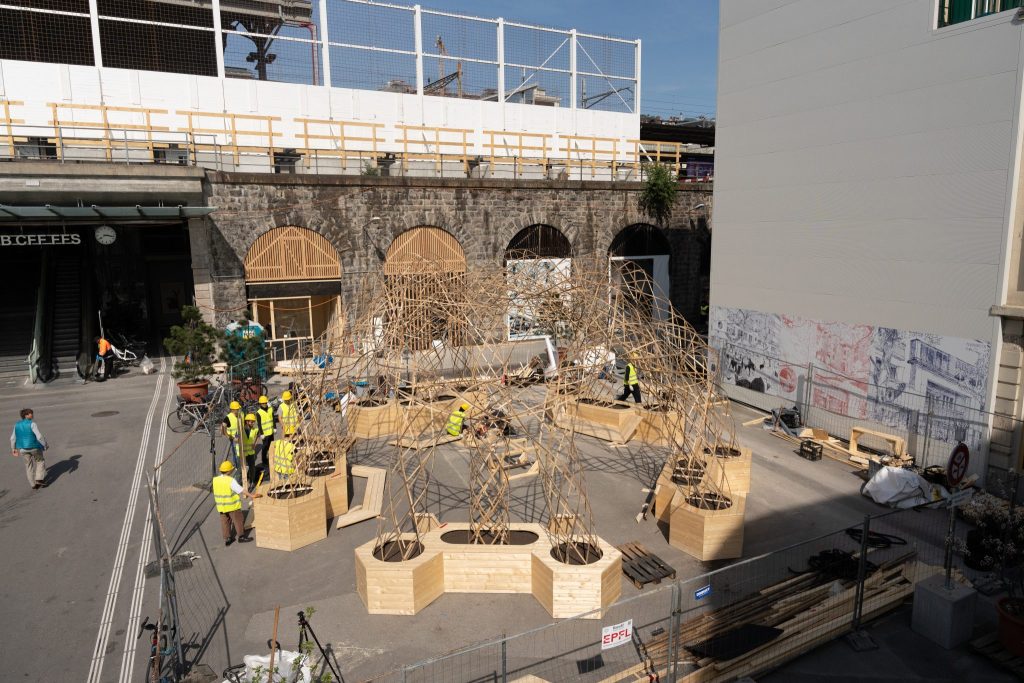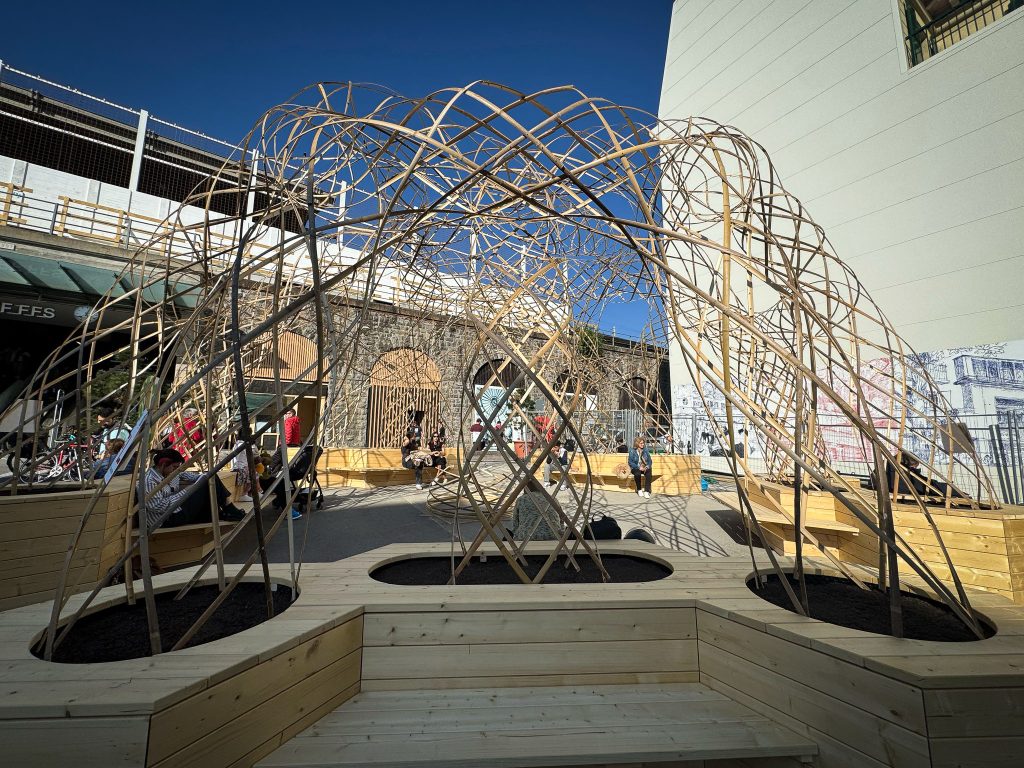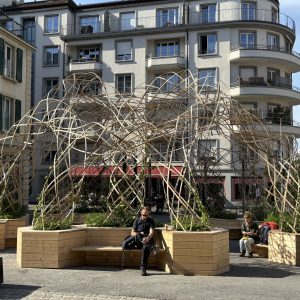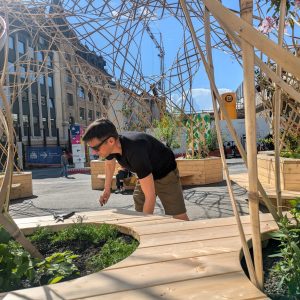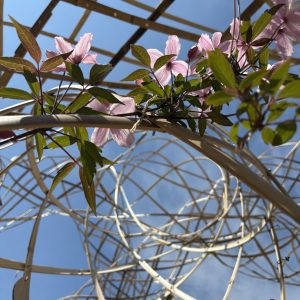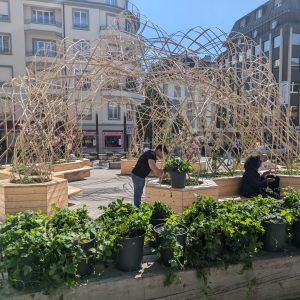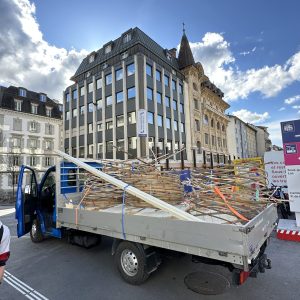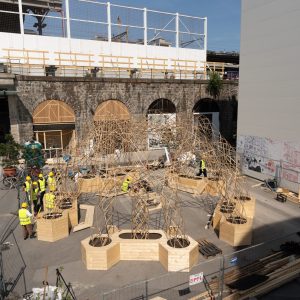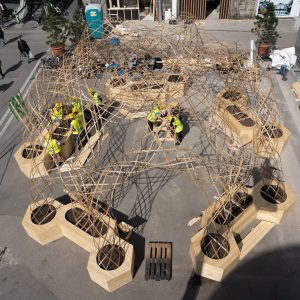BamX Saugettes
Overview
BamX Saugettes is a pioneering urban greening initiative commissioned by the City of Lausanne to introduce vegetation into the dense, concrete-dominated environment of Place de Saugettes. Conceived as a research demonstrator, the structure aims to create a vegetated canopy that will provide shade during summer months, addressing the challenges of integrating greenery in areas constrained by existing urban infrastructure.
Design and Structure
The research demonstrator is an ultra-lightweight, modular structure with a dome-like form, defined by an interwoven pentagonal pattern created through the precise arrangement of deployable components. It consists of 30 prefabricated cylindrical modules and 5 woven elements assembled on site, which together form a stable yet adaptable structural framework. This innovative design leverages its modular cylindrical typology to maximize the surface area covered by the structure.
Green Canopy
The bespoke design features a woven network of thin, flexible slats that supports plant growth. Plant pods with integrated seating serve as structural supports for the lattice structure, while offering inviting places to rest and connect. By combining greenery and lightweight structures, BamX aims to revitalize concrete-heavy urban spaces, making them cooler, greener, and more vibrant.
Construction
The fabrication process was carried out in two stages. In the first stage, all deployable cylindrical modules and plant pods were prefabricated at EPFL using simple production techniques. The second stage took place on site, where the modules were deployed and connected using minimal external equipment to form the final structure. This efficient approach allowed for rapid assembly while showcasing the adaptability and practicality of the design.
Deployabilty
Deployability was a central feature in the design of the structure. Thirty modules were engineered to be deployable, allowing them to be compacted during prefabrication to optimize storage and simplify transport. These deployable units were produced off-site and transported efficiently—along with the raw materials for five additional modules—using a small open van. The five remaining modules, which required more complex geometries involving high bending and torsion zones, were fabricated on site to avoid weakening the natural material through repeated deployment. This strategy demonstrated both the structural intelligence and logistical efficiency of the system.
Video Gallery
Photo Gallery


